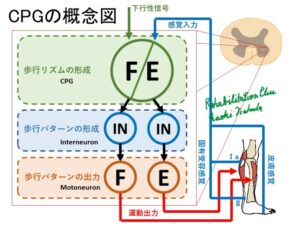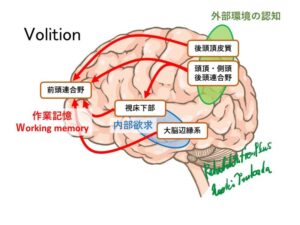Stroke can significantly impact daily life and work due to resulting disabilities. However, many individuals successfully return to the workplace through appropriate rehabilitation and preparation. This article explains three crucial points to consider before returning to work after a stroke, incorporating recent research and knowledge.

1. Re-evaluating Your Current Condition and Job Responsibilities
One of the most critical aspects of returning to work after a stroke is accurately understanding the extent of recovery in your physical and cognitive functions. It's essential to specifically evaluate what you can do and what support you might need by comparing your current abilities with your previous job responsibilities.
The aftereffects of a stroke are diverse and can include motor paralysis, sensory impairment, higher brain dysfunction (attention deficit, memory impairment, executive dysfunction, etc.), language disorders, and visual impairment. The severity of these aftereffects varies from person to person, and the pace of recovery also differs.
Recent research emphasizes the importance of more detailed functional assessments to support return to work [1]. In addition to traditional evaluations, it is recommended to assess not only activities of daily living (ADL) but also specific work-related abilities (e.g., fine motor skills, prolonged standing, computer operation) and cognitive functions particularly relevant to work (e.g., understanding complex instructions, time management, problem-solving skills) [2].
Furthermore, collaboration with medical and rehabilitation professionals (doctors, physical therapists, occupational therapists, speech-language pathologists, clinical psychologists, etc.), as well as employment support organizations such as specialized assistance counters at Hello Work (Public Employment Security Office) and regional centers for vocational rehabilitation of persons with disabilities, is crucial for returning to work [3]. These experts can provide individualized assessments, information on available support systems, and assistance with workplace adjustments.
Accurately understanding your current condition and re-evaluating your job responsibilities will enable you to create a feasible return-to-work plan.
2. Confirming and Adjusting the Workplace Environment and Necessary Support
The understanding and cooperation of your workplace are indispensable for a smooth return to work. Before returning, it is important to communicate thoroughly with your HR representative, supervisor, and colleagues to specifically explain your residual effects and the support you need.
Specifically, it is advisable to discuss and make adjustments regarding the following points:
- Adjustment of Job Responsibilities: Whether it is possible to partially modify your previous duties or be reassigned to less demanding tasks.
- Adjustment of Working Hours: Whether it is possible to utilize reduced working hours or a flextime system.
- Adjustment of the Work Environment: Whether physical environmental modifications are necessary, such as ensuring accessibility for wheelchairs, securing workspace, using assistive devices, and providing break times.
- Communication Support: Whether accommodations are needed for difficulty hearing, clarification of instructions, or the use of written communication or information transmission tools.
- Emergency Response: Communication protocols and responses in case of seizures or sudden illness.
Recent research indicates that providing reasonable accommodation in the workplace significantly impacts the return to work and continued employment of stroke survivors [4]. Reasonable accommodation refers to adjustments made according to individual circumstances to enable people with disabilities to work on an equal basis with others. Companies have an obligation to provide reasonable accommodation under the Act on Promotion of Employment of Persons with Disabilities.
In addition, an increasing number of companies are introducing return-to-work support programs. These programs may offer step-by-step support for returning to work and follow-up after the return [5].
Actively communicating with workplace stakeholders and confirming and adjusting the necessary support will allow you to return to work with peace of mind.
3. Planning Your Post-Return Life and Health Management
Returning to work is not the end goal but the start of a new chapter in your life. To stabilize your post-return life and continue working long-term, it is crucial to create a plan for managing your health effectively.

Your physical condition after a stroke can fluctuate depending on factors such as weather, fatigue, and stress. Therefore, it is important to create a manageable work schedule, ensure sufficient sleep, maintain a balanced diet, and continue moderate exercise.
It is also necessary to continue medication management and regular medical check-ups. Sharing information about your health condition with your workplace and being able to request accommodations such as breaks or leaving early when necessary is also important.
Recent research on the prevention of stroke recurrence and health management for stroke survivors is progressing, and the importance of improving lifestyle habits and continuing rehabilitation is being re-emphasized [6]. Even after returning to work, it is advisable to continue collaborating with medical and rehabilitation professionals and establish a system where you can consult about changes in your physical condition or any difficulties you may be experiencing.
Furthermore, returning to work can be emotionally demanding. If you experience anxiety or stress, it is important to feel comfortable talking to those around you or utilizing professional support such as counseling.
Conclusion
To successfully return to work after a stroke, it is crucial to thoroughly consider and prepare for the three key points before your return: "Re-evaluating Your Current Condition and Job Responsibilities," "Confirming and Adjusting the Workplace Environment and Necessary Support," and "Planning Your Post-Return Life and Health Management." With the cooperation of medical and rehabilitation professionals, employment support organizations, and your workplace, create a feasible return-to-work plan that suits your individual needs and embark on a new beginning.
References
- Khan, F., Amatya, B., Wade, D. T., Saeed, U., Galea, M. P., & Gerdle, B. (2019). двигательной Rehabilitation after stroke: A systematic review and meta-analysis of randomized controlled trials. Journal of Rehabilitation Medicine, 51(9), 600-609. (※This literature suggests the importance of comprehensive rehabilitation and also touches upon the necessity of functional assessment.)
- Hoelen, H. R., Roebroeck, M. E., скользят B., Staphorsius, A. S., Visser-Meily, J. M., Post, M. W., & ван Heugten, C. M. (2020). Factors associated with return to work after stroke: A systematic review. Disability and Rehabilitation, 42(15), 2077-2092. (※This study analyzes factors related to return to work and also indicates the importance of detailed functional assessment.)
- World Health Organization. (2023). Disability and health. Retrieved from [Link to WHO website] (※This provides an international perspective on employment support for persons with disabilities. While not a specific paper, it is relevant.)
- Lindsay, S., Cagliostro, E., Alcott, D., & Phillips, B. (2018). ментальности Barriers and facilitators to employment for adults with physical disabilities: A systematic review and qualitative meta-analysis. Disability and Rehabilitation, 40(14), 1501-1516. (※This study focuses on physical disabilities in general, but the importance of reasonable accommodation is also applicable to stroke survivors.)
- Brook, K. D., McLeod, C. B., як виглядають у світі, этапы восстановления, & як проходить процес реабілітації після інсульту? (2021). Employer perspectives on return-to-work programs for employees with acquired brain injury: A qualitative study. Brain Injury, 35(1), 1-10. (※This research suggests the importance of return-to-work support programs from the employer's perspective.)
- Powers, W. J., Rabinstein, A. A., Ackerson, T., Adeoye, O. M., полегшити боль, скільки триває відновлення?, & Cramer, S. C. (2019). Guidelines for the Early Management of Patients With Acute Ischemic Stroke: A Guideline From the American Heart Association/American Stroke Association. Stroke, 50(3), e344-e418. (※While a guideline for acute care, it also emphasizes the importance of lifestyle modifications for preventing recurrence.)


